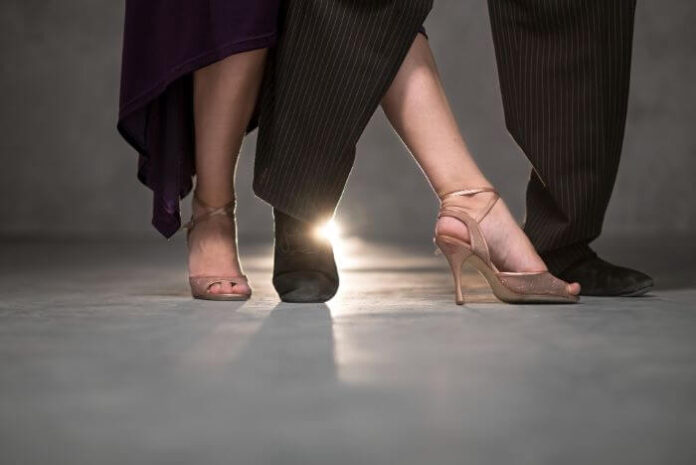Regarding ballroom dancing, the right shoes can make a big difference in your performance and comfort. With so many options available, it can be overwhelming to choose the right pair. This article will discuss the different types of ballroom shoes, factors to consider when making your choice, and tips for maintaining and breaking your new ballroom shoes.
1. Types of Ballroom Shoes
- Latin Shoes
These shoes are designed for Latin styles such as salsa, cha-cha, and rumba. They usually have a 2–3-inch heel and a closed toe. Latin shoes are often made of leather or suede and have flexible soles. They are typically lightweight and have a snug fit, allowing quick footwork and turns.
- Standard Shoes
Classic shoes are used for ballroom styles such as waltz, foxtrot, and tango. They typically have a 1–2-inch heel and a closed toe. Classic shoes are often made of leather and have stiffer soles than Latin shoes. They are designed to provide support and stability for smooth gliding movements.
- Practice Shoes
Practice shoes are designed for use during rehearsals and practice sessions. They typically have a flat or low heel and a closed toe. Practice shoes are often made of canvas or synthetic materials and have flexible soles. They are designed to be comfortable and durable for extended periods of wear.
Related Article: 10 Resolutions You Should Make for Your Wardrobe
2. Factors to Consider
- Fit
The most crucial factor to consider when choosing ballroom shoes is the fit. Your shoes should fit snugly and comfortably without being too tight or loose. Make sure to try on shoes with the same type of socks or hosiery that you plan to wear while dancing.
- Heel Height
The heel height of your shoes will depend on the dance style you will be doing. Latin shoes typically have higher heels than standard shoes. Consider your skill level and comfort when choosing a heel height. Beginners may want to start with a lower heel, while more experienced dancers prefer a higher heel for added stability and control.
- Material
Ballroom shoes are typically made of leather or suede. Leather is durable and easy to care for, while suede has a softer, more flexible feel. Synthetic materials are also an option, but they may provide a different level of support and durability than leather or suede.
- Sole
The sole of your ballroom shoe will affect how you move and feel on the dance floor. A flexible sole will allow quick turns and footwork, while a stiffer sole will provide more stability and support. Consider the dance style you will be doing and your skill level when choosing a sole.
3. Maintaining and Breaking in Your Shoes
- Maintaining
Proper care and maintenance of your ballroom shoes are essential to extend their lifespan. Before wearing, leather and suede shoes should be treated with water and stain repellent. They should be kept from heat and moisture and stored in a cool, dry place. Clean them regularly and apply a leather conditioner to keep them supple.
- Breaking in
Ballroom shoes, especially new ones, may need to be broken in before wearing them for an extended period. This will help to prevent blisters and discomfort. Wear them around the house for short periods before wearing them to dance. Start with a few minutes and gradually increase the time until you feel comfortable wearing them for an entire dance session.
Conclusion
Choosing the right ballroom shoe is an important decision that will affect your performance and comfort on the dance floor. Try on shoes at your local dance shop to get the right fit, and consider your skill level and comfort when deciding on a heel height. Ballroom shoes must be adequately maintained and broken in before wearing them for an extended period.







